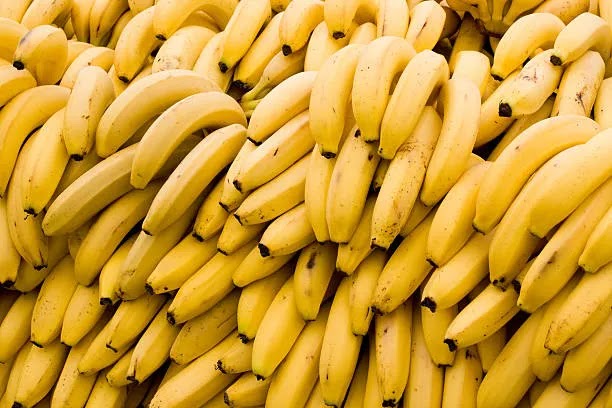Banana Post
These Articles Do NOT Provide Medical Advice
Consult Your Doctor Before Beginning ANY Diet
Surprising Side Effects Bananas Have On Your Immune System
Says Science By Lekhak January 13, 2022

Experts claim that this delicious fruit can help boost your immune system.
Bananas are America’s most popular fruit, and it’s easy to understand why: they’re delicious, cheap, and can be found almost anywhere food is sold, from gas stations to grocery stores. On the other hand, Bananas can provide a surprising amount of support to your immune system, keeping you healthy in the long run if you include them in your daily routine. Continue reading to learn about the surprising health benefits of bananas for your immune system.
1. They may help reduce your chance of developing the flu.

Do you want to avoid becoming sick during the flu season? Now is the time to incorporate some bananas into your daily routine. It was discovered in a PNAS study report published in the year 2020 that an engineered banana lectin (a type of indigestible protein that binds to sugar) had influenza virus-fighting activity against different strains of the influenza virus. The research article was published in the journal PNAS.
2. They may help reduce your risk of colorectal cancer.

According to the Centers for Disease Control and Prevention, colorectal cancer is the third most common cancer among men and women in the United States, and it also has the third-highest death rate (CDC). Consuming resistant starch-rich foods like bananas, on the other hand, may help reduce your risk. Resistant starch is excellent at reducing inflammation and may help reduce the risk of colorectal cancer, according to a 2013 review of evidence published in Current Opinion in Gastroenterology.
3. They may give your body an immune boost after working out.

Were you looking for the perfect diet to fuel your exercises while supporting your immune system? Rather than reaching for a protein bar, go for a banana. Individuals who ate a banana before a 75-kilometer cycling time trial had less pronounced immune system-weakening responses to the strenuous exercise, including lower levels of exercise-induced inflammation and oxidative stress, according to a 2012 study published in PLOS One.
4. They may reduce your risk of post-surgery complications.

When it comes to reducing adverse post-surgical outcomes like graft-versus-host disease, resistant starch, such as that found in bananas, could be your secret weapon (GVHD). According to a 2016 study published in Nature Immunology, resistant starch, such as that found in bananas, can modify bacteria in the human digestive tract for the better, reducing the risk of GVHD.
5. They may improve your overall gut health.

Because the large bulk of your immune cells lives in your digestive system, gut health is critical to overall health. On the other hand, Bananas can aid in the maintenance of a healthy balance of good bacteria in your gut, providing your immune system a huge boost.
Resistant starch, such as that found in bananas, can help good gut bacteria flourish while also improving lipid metabolism, according to a 2017 study published in the American Society for Microbiology journal.
Bananas

Eating bananas regularly provides you with more than just a potassium boost.
While bananas are recognized for giving various health benefits, including an increase in potassium, that isn’t the only unexpected side effect you’ll see when eating them. In reality, eating bananas can offer your body a chemical called resistant starch, which aids digestion and keeps you feeling full.
Here’s why resistant starch is important in your diet.
What is resistant starch?
The latest hip kid on the carbohydrate block is resistant starch. It reduces blood sugar after meals, feeds beneficial bacteria in the gut microbiome, and assists weight loss by slowing digestion and keeping us fuller for longer.
Resistant starches are part of a larger category of carbs known as low-digestion carbohydrates (LDC), which aren’t completely digested. Fiber and sugar alcohols are examples of other LDCs. In fact, due to a lack of absorption, foods high in resistant starch supply half the calories of their typical starchy equivalents, according to some research.
Resistant starch is a carbohydrate that acts more like fiber than a carbohydrate. This starch gets its name from the fact that its strong outer wall genuinely “resists” digestion. This digestive resistance has a significant role in hunger and has downstream consequences on appetite and blood sugar levels.
“Resistant starch is not digested and goes unmodified through the GI system, acting as a prebiotic and soluble fiber,” says Kate Gerweck, MS, RD, LD. “Banana resistant starch has been examined about bowel health and has been proven to considerably enhance stool quality, reducing reports of painful, cracked, or hard stool, improving bowel frequency, and reducing medication use.”
The cook-and-cool method is commonly used to produce good resistant starch. Cooked potatoes, for example, do not contain resistant starch. Cooking and cooling potatoes overnight in the fridge, on the other hand, produces resistant starch. Bananas are unique in that they do not require cooking to gain the benefits of their resistant starch!
When you eat greener bananas, you get more resistant to starch.
Bananas are special in that the benefits of their resistant starch content must be consumed when they are still green. Green bananas have a gritty aftertaste, which is caused by resistant starch. When a banana turns yellow or develops brown specks, the starch content decreases and is replaced by sugars. For this reason, brown bananas are famous for making wonderful banana bread! While eating a plain green banana may suit some of us, we can conceal the chalky flavor by blending it into a smoothie.
What are the health benefits of resistant starch?
Researchers have discovered that resistant starch has a positive impact on three major bodily systems. The first is insulin resistance and blood sugar management.
“The most undervalued item in a blood sugar diet is resistant starch,” says Kelly Schmidt, RD. “Resistant starches should be highlighted since their advantages support overall wellbeing, including gut health and insulin sensitivity.”
Because nearly half of the carbohydrates in resistant starch are not digested, they never reach the bloodstream to cause blood glucose to surge! If you’ve been diagnosed with diabetes or insulin resistance, adding this amazing molecule to your diet could help! According to studies, eating up to 40 grams of resistant starch per day can help people with metabolic syndrome improve their insulin sensitivity!
The effects of resistant starch on the gut microbiome are a second developing field of investigation. The GI tract is home to a four-billion-strong army of bacteria that controls many aspects of metabolic health, including weight loss, hunger signals, and cravings.
Eating meals that enhance the diversity of beneficial bacteria in our gut is the greatest strategy to create a healthy gut microbiome. Prebiotic foods are what they’re called. Prebiotics nourish the healthy bacteria in our stomach, allowing them to outnumber the bad over time. Include foods high in resistant starch to achieve this balance!
“A banana’s resistant starch functions as a prebiotic, meaning it feeds the healthy bacteria. Blood sugar levels have been linked to increased gut flora balance, “Lacy Ngo, RD MS, agrees.
The third method resistant starch benefits your health is by regulating your appetite. Because this starch is resistant to digestion, it slows stomach emptying. Our hunger signals are prolonged for hours after consuming a meal or snack high in resistant starch due to this. Choosing slow-digesting foods will keep us full for hours, allowing us to make better choices at our next meal and, overall, lowering our total daily caloric consumption.
To summarize, eating foods high in resistant starch keeps us fuller for longer, has half the calories of other carbohydrates and may help us consume fewer calories in a day? It sounds like a weight-loss magic trick.
This little-known starch can help you achieve your goals, whether you’re aiming to lose weight, enhance your gut health, or boost your metabolic health.

Do the health benefits of bananas depend on their ripeness?
Benefits of Unripe Bananas:
Since unripe bananas contain more starch, this means they have less sugar in them (which is usually why they don’t taste as sweet). This can be especially beneficial to people trying to avoid sugar, like someone with diabetes.
The starch in unripe bananas can make you feel full faster and keep you full longer. This makes them a great snack in between any meal. This can also help you burn more fat quickly.
Higher Probiotic Prevalence. Probiotics are all around good for you, especially for your colon. These can also help you absorb nutrients better (especially calcium).
Benefits of Ripe Bananas:
The brown spots on bananas indicate TNF (Tumor Necrosis Factor). TNF helps fight against abnormal cells in the body.
Your body can easily break down the carbohydrates in ripe bananas and they can even aid in digestion.
Antioxidants have various health benefits, including improved immunity, anti-aging effects, and anti-inflammatory properties. Regardless of the stage of ripeness, bananas pack a ton of nutrients into one fruit. They are a great snack that maintain blood sugar levels and can keep your energy levels up all day long.







